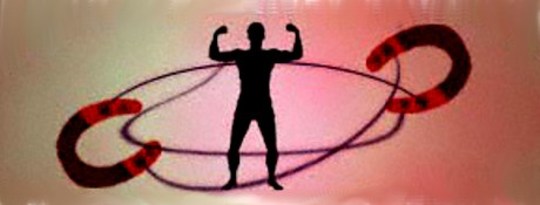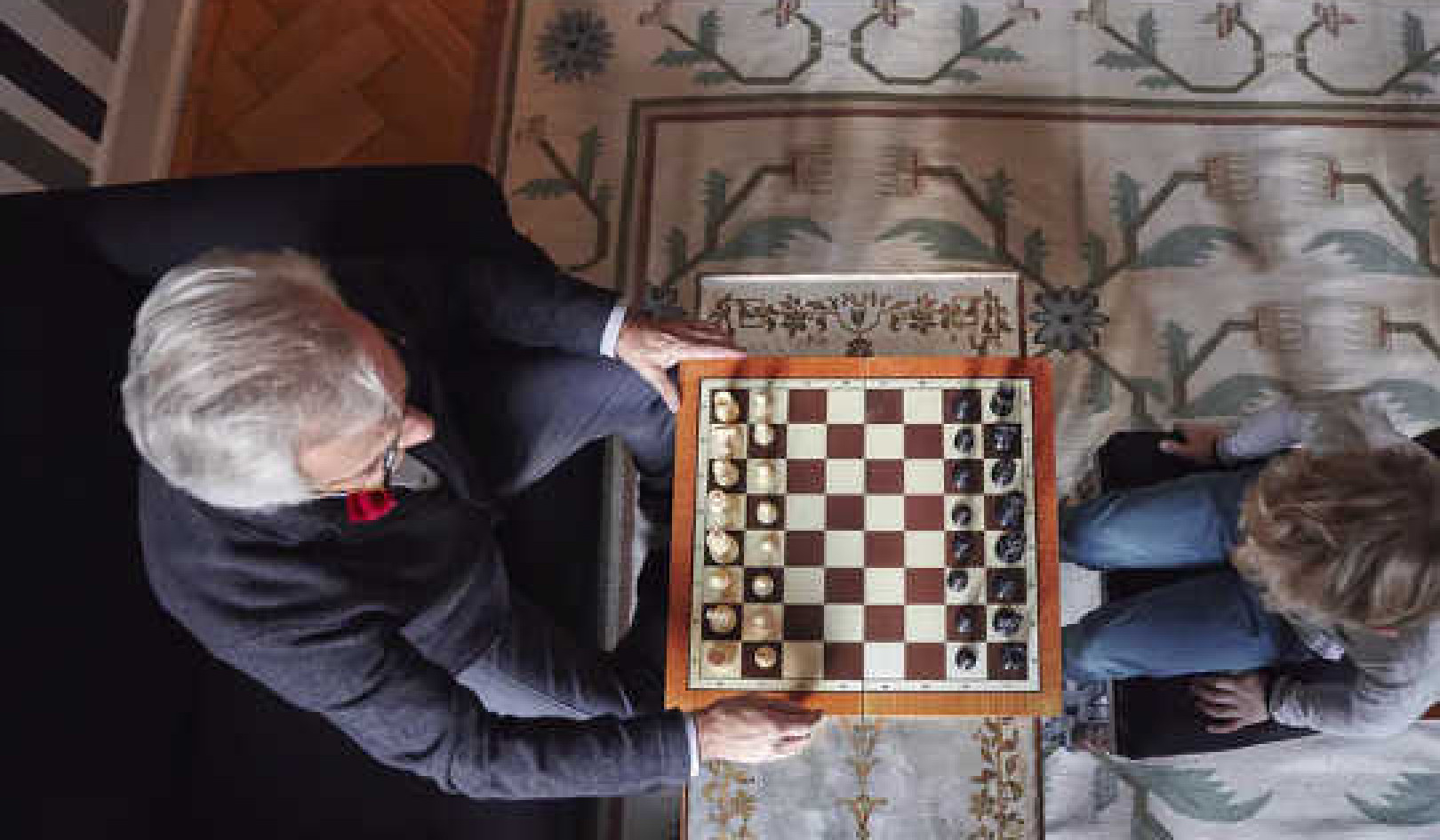
While magnet therapy may just now be gaining more widespread use and popularity in the United States and elsewhere, the use of magnetic energy for healing dates back thousands of years. In fact, the earliest written medical text, The Yellow Emperor's Book of Internal Medicine, published in China around 2,000 B.C., mentions the application of`magnetic stones to correct health imbalances.
The ancient Egyptians were apparently acquainted with the power of magnets. Legend has it that Cleopatra slept with a magnetic stone on her forehead to preserve her youthful appearance (perhaps trying to cause the pineal gland in the brain to release melatonin). The ancient Hindus in India believed that a dying person should rest with their body aligned north and south (their head pointed north) to relieve their pain and ease their departure from this life."
The word magnet comes from the ancient Greeks. It is thought to derive from Magnes lithos, meaning "stone from Magnesia," an area of Greece that was known for its volcanic rocks with magnetic attributes. The Greek philosopher Aristotle spoke about using magnets as a healing therapy.
Paracelsus: Magnets energize the body's life force
The next promulgator of magnet therapy was Paracelsus, a physician and alchemist born in Switzerland in 1493. He was the first to propose that illnesses were caused by external substances (the concept of disease), not imbalances in the body's "humors" (the dominant theory at the time). He recommended using sulfur, mercury, and other substances to treat diseases. Paracelsus had a notion of a "life force" in nature and the human body, which he called archaeus (meaning "ancient"). He treated illnesses by replenishing the archaeus with the energy found in certain herbs and foods. Paracelsus advocated using magnets to energize and influence the body's life force to start the healing process, treating everything from inflammation to diarrhea to epilepsy
In 1600, William Gilbert, court physician to Elizabeth I of England, published the first scientific treatise on magnetism, De Magnete. This book summarized the current knowledge about magnetism, showing, for instance, that steel holds a magnetic charge better than iron and that there is a distinction between magnetism and electricity. Gilbert was the first to describe the Earth as a huge magnet with magnetic poles close to the geographic north and south poles. He also confirmed that use of the lodestone could be "beneficial in many diseases of the human system". (The term lodestone for magnetized stones is from the Middle Ages, when the lodestone -- "guiding stone" -- was used in compasses by sailors as a navigational tool.)
Mesmer: Magnetism can treat mental illnesses & other conditions
 Franz Anton Mesmer, an 18th-century mathematician and physician, wrote his doctoral thesis on the effects of gravitational fields on human health. He proposed that there was magnetic energy flowing throughout the universe and inside the body as well. Mesmer thought that the body had magnetic poles and that illness was caused by these poles moving out of alignment with the universal magnetic flow. He experimented with using magnets to treat seizures and other conditions.
Franz Anton Mesmer, an 18th-century mathematician and physician, wrote his doctoral thesis on the effects of gravitational fields on human health. He proposed that there was magnetic energy flowing throughout the universe and inside the body as well. Mesmer thought that the body had magnetic poles and that illness was caused by these poles moving out of alignment with the universal magnetic flow. He experimented with using magnets to treat seizures and other conditions.
Mesmer claimed that he could heal by touch, applying his own magnetism to influence the magnetic flow in a patient's body. Mesmer believed that magnetism could treat mental illnesses directly and other conditions indirectly. He became famous traveling around Europe as a healer and he later opened a magnetism salon in Paris. In his salon, patients sat in water-filled vats containing iron filings and rods. Patients would pour magnetic water on parts of their bodies affected by illness and sometimes join hands to facilitate the magnetic flow, all accompanied by music and colored lights added by the theatrical Mesmer. Patients sometimes fainted or went into convulsions, later claiming they were "mesmerized". (Mesmer's notion of magnetism gradually came to be viewed as hypnotic suggestion, hence the current meaning of the word mesmerize.)
Around 1800, Alessandro Volta constructed the first battery (made of silver, moist cardboard, and zinc), which produced a small, steady electric current. Further experiments with electricity by Andre-Marie Ampere, Michael Faraday, and others, established the link between magnetism and electricity. Faraday demonstrated that a magnet in motion could produce electricity and that the flow of electricity produces a magnetic field. This was confirmed by Scottish scientist James Maxwell, who showed that light was an electromagnetic phenomenon as well.
Magnets as healing therapies
The publication of Mary Shelley's Frankenstein in 1818 certainly shows that electricity was in the air during this period. This gothic romance about bringing the dead to life reflected an interest at this time in using electromagnetism as a therapy. Reanimation devices, using electricity in much the same way as defibrillators are used in hospitals today to jumpstart the heart, became popular and were successfully used for heart arrhythmias, angina, and curvature of the spine. Magnetic boots, rings, girdles, and caps, as well as magnetic ointments were available in mail-order catalogues. Daniel Palmer founded Palmer's School of Magnetic Cure in Davenport, Iowa, which taught massage techniques, spinal manipulations, and magnets as healing therapies -- this later evolved into modern chiropractic.
The discovery of the electron at the end of the 19th century moved electromagnetism to the atomic level, demonstrating that all matter is essentially electric in nature. Finally, Albert Einstein, in postulating his general theory of relativity, showed that electricity and magnetism are not discrete phenomena, but different aspects of the same phenomenon. Medical textbooks at this time included magnetism and electricity as therapeutic alternatives for mental disorders in particular and other conditions as well. It was recommended for convulsions, insomnia, migraine, fatigue, arthritis, and pain. Magnet therapy fell into disfavor following World War II with the development of antiobiotics and biochemistry-based medicine. Today, magnet therapy is seeing a resurgence in use and is an officially approved therapy in over 45 countries worldwide.
 This article was excerpted with permission from the book:
This article was excerpted with permission from the book:
Magnet Therapy,
by William H. Philpott, M.D. and Dwight K. Kalita, Ph.D. with Burton Goldberg. ©2000.
Reprinted with permission from the publisher, AlternativeMedicine.com Books, Tiburon, CA, USA.
Info/Order book.
About The Authors
 William H. Philpott, M.D., has specialty training and practice in psychiatry, electroencephalography, neurology, nutrition, environmental medicine, and toxicology. After 40 years of medical practice, Dr. Philpott retired in 1990 to engage in research as Chairman of the Independent Institutional Review Board. In this capacity, he guides physicians gathering data on the treatment and prevention of degenerative diseases using magnetic therapy.
William H. Philpott, M.D., has specialty training and practice in psychiatry, electroencephalography, neurology, nutrition, environmental medicine, and toxicology. After 40 years of medical practice, Dr. Philpott retired in 1990 to engage in research as Chairman of the Independent Institutional Review Board. In this capacity, he guides physicians gathering data on the treatment and prevention of degenerative diseases using magnetic therapy.
Dwight K. Kalita, Ph.D., is the co-author of Brain Allergies: The Psychonutrient and Magnetic Connections, Victory over Diabetes: A Bio-Ecologic Triumph, and Nourishing Your Child, and the author of Light Consciousness. He was also co-editor of A Physician's Handbook on Orthomolecular Medicine. He has devoted over 30 years to medical journalism.
 Burton Goldberg, Ph.D., Hon., has published Alternative Medicine: The Definitive Guide, a1100-page reference book, hailed as "the bible of alternative medicine". For information, go to www.alternativemedicine.com.
Burton Goldberg, Ph.D., Hon., has published Alternative Medicine: The Definitive Guide, a1100-page reference book, hailed as "the bible of alternative medicine". For information, go to www.alternativemedicine.com.























